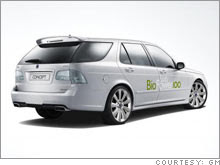Li ion Battery Safety and Mechanism of its Failure
So far, the fields of Li-ion battery application for the last years enlarge and grab increasingly more market from originally discovered - cell phone application to notebooks, digital camera, PDA etc. This is because of their high energy density (smaller size/weight – higher capacity) and the capacity of the Li-ion cells of the same size has increased by > 7% per each year.
Now safety is considered one of the most important features of Li-ion cells. Nearly all electricity consumers demand a high voltage, which is realized by connecting cells in series. Since the single cells have different capacities, it is impossible to maintain the optimal charge voltage in the weakest cell at the end of the charge process. Consequently, the cell voltage increases and, besides the main charging reaction, chemical and electrochemical side reactions are possible. To avoid this problem for lithium-ion batteries consisting out of non-over-chargeable cells, computer-controlled charging systems regulate the voltage for each single cell. For single cell use it is usually installed protecting devises (protecting circuit mode – PCM) which consists: - material with positive temperature coefficient (PTC), protective circuit that block overcharging above 4.34V, over-discharging below 2V and over-current above 1C and cell can has safety pressure-release rapture or vent.
Li-ion battery pack with PCM installed not warranty us from smoke, fire or explosions (and not only due to defects or malfunction of the devices). The chemistry of the Li-ion battery quite complicated and battery pack need balance between performance, safety, cost and size. Each battery maker has its own consideration what is more important in this square balance.

The most developed chemistry for Li ion battery on the market so far is Li1-xCoO2 / LiyC6 with LiPF6 salt in non-aqueous electrolyte solvent. LiCoO2 is considered as the most thermally and chemically unstable at abuse conditions among the other types of cathode materials. However what is the main factor(s) leading to cell failure at overcharge still not clear. After reviewing of many reports on Li-ion cell behaviors during abuse conditions, we can find that its related not only on electrode material used in battery but as well cell design and applied abuse conditions. For many years, it was developed several standards for battery safety by Underwriters Laboratories Requirements (UL) [4], Technical Inspection Association (TUV) and Japanese Industrial Standard (JIS) [5] and many others. However, accidents involved with Li-ion batteries still happened and getting more serious.

Fig 1

However, accidents involved with Li-ion batteries still happened and sometimes become too dangerous. The new safety guidelines developed by Japan Electronics and Informational Technology Industries association (JEITA) released on April 20, 2007 (after Sony’s recall for their laptop batteries) stressed the importance of avoiding high-speed charging using higher than rated voltages.
Fig 2
So what is/are main factor(s), which affect battery safety at abuse conditions? See next...
see what happens inside Li ion battery at overcharge
Now safety is considered one of the most important features of Li-ion cells. Nearly all electricity consumers demand a high voltage, which is realized by connecting cells in series. Since the single cells have different capacities, it is impossible to maintain the optimal charge voltage in the weakest cell at the end of the charge process. Consequently, the cell voltage increases and, besides the main charging reaction, chemical and electrochemical side reactions are possible. To avoid this problem for lithium-ion batteries consisting out of non-over-chargeable cells, computer-controlled charging systems regulate the voltage for each single cell. For single cell use it is usually installed protecting devises (protecting circuit mode – PCM) which consists: - material with positive temperature coefficient (PTC), protective circuit that block overcharging above 4.34V, over-discharging below 2V and over-current above 1C and cell can has safety pressure-release rapture or vent.
Li-ion battery pack with PCM installed not warranty us from smoke, fire or explosions (and not only due to defects or malfunction of the devices). The chemistry of the Li-ion battery quite complicated and battery pack need balance between performance, safety, cost and size. Each battery maker has its own consideration what is more important in this square balance.

The most developed chemistry for Li ion battery on the market so far is Li1-xCoO2 / LiyC6 with LiPF6 salt in non-aqueous electrolyte solvent. LiCoO2 is considered as the most thermally and chemically unstable at abuse conditions among the other types of cathode materials. However what is the main factor(s) leading to cell failure at overcharge still not clear. After reviewing of many reports on Li-ion cell behaviors during abuse conditions, we can find that its related not only on electrode material used in battery but as well cell design and applied abuse conditions. For many years, it was developed several standards for battery safety by Underwriters Laboratories Requirements (UL) [4], Technical Inspection Association (TUV) and Japanese Industrial Standard (JIS) [5] and many others. However, accidents involved with Li-ion batteries still happened and getting more serious.

Fig 1

However, accidents involved with Li-ion batteries still happened and sometimes become too dangerous. The new safety guidelines developed by Japan Electronics and Informational Technology Industries association (JEITA) released on April 20, 2007 (after Sony’s recall for their laptop batteries) stressed the importance of avoiding high-speed charging using higher than rated voltages.
Fig 2
So what is/are main factor(s), which affect battery safety at abuse conditions? See next...
see what happens inside Li ion battery at overcharge
| Check out my Public Files on myDataBus! | |
| Provided to you by | |


Comments